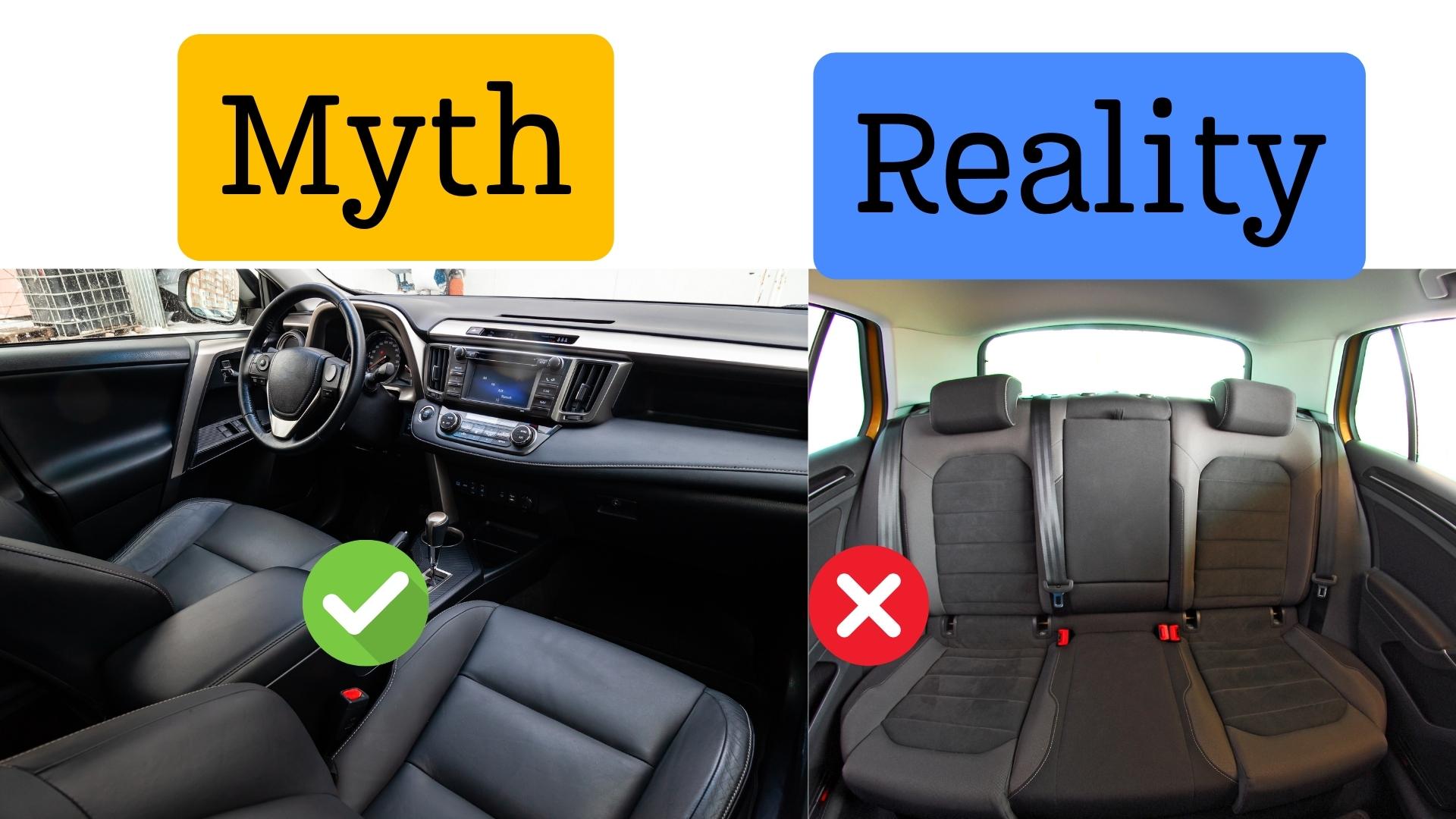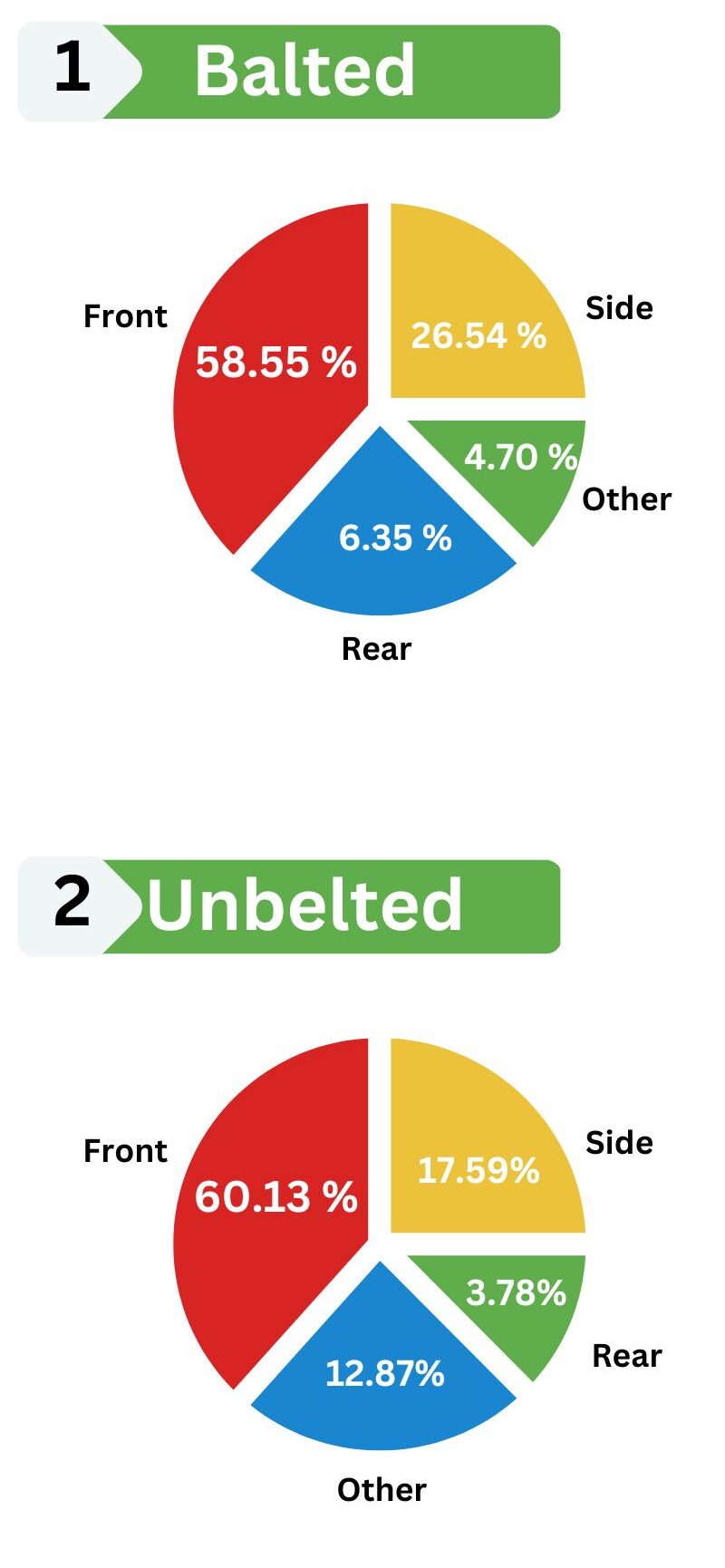Which Seat is the Death Seat in a Car? 7 Key Insights
The “death seat” in a car is often considered to be the front passenger seat because it’s close to where impacts can occur. Different seats in a car come with varying levels of safety when it comes to the risk of injuries in accidents.
The front passenger seat is sometimes called the “death seat” because it’s close to where impacts often happen, like the dashboard and windshield. If there’s a crash or a quick stop, the person in this seat might get hurt more than people sitting elsewhere in the car.
Knowing the risks of sitting in different spots in the car can help keep everyone safe and encourage careful driving. It’s really important to learn about how to be safe in your seat and to always think about the safety of everyone in the car when you’re on the road.
Myth Versus Reality

| Common Beliefs about the Death Seat | Debunking Myths with Statistics |
|---|---|
|
|
|
|
|
|
|
|
It is important to note that while these beliefs are commonly held, they often do not align with the actual data. Understanding the statistics surrounding car occupant safety can help us make informed decisions and prioritize our well-being while traveling.
Inside The Crash Data
To figure out which car seat is the riskiest, experts have looked closely at crash data. What they’ve found goes against the common idea of a single “death seat.” Surviving a crash can depend on many things like where the car gets hit, if you’re wearing a seatbelt, and if airbags pop out right.
One study pointed out that sitting in the middle of the back seat might seem the safest since it’s farthest from where crashes usually happen. But, it’s not that simple. Crashes from behind can be just as deadly, no matter where you sit.
The big takeaway is to always buckle up, make sure airbags work, and stick to the road rules to lower the chances of getting hurt or worse in a crash.
| Initial Contact Point | Restraint used | |||||
|---|---|---|---|---|---|---|
| Belted | Unbelted | Total* | ||||
| Number | % | Number | % | Number | % | |
| Front | 6,708 | 44 | 7,037 | 46 | 15,328 | 100 |
| Side | 3,038 | 54 | 2,058 | 37 | 5,636 | 100 |
| Rear | 727 | 55 | 442 | 33 | 1,322 | 100 |
| Other (mostly rollover) | 538 | 24 | 1,506 | 68 | 2,214 | 100 |
| Total* | 11,448 | 44 | 11,703 | 45 | 25,788 | 100 |
| *Total includes other and/or unknowns | ||||||
DATA SOURCE – IIHS.COM
Crash Data By Speeding
In 2021, nearly a third of all fatalities from car accidents were due to speeding, maintaining its role in over 25% of crash-related deaths for the past decade. Speeding encompasses instances where drivers were penalized for exceeding speed limits, driving recklessly given the road conditions, engaging in racing, or simply going too fast.
| Motor vehicle crash deaths involving speeding as a contributing factor, 2012-2021 | |||||
|---|---|---|---|---|---|
| Speeding-related | Not speeding-related | Total | |||
| Number | % | Number | % | Number | |
| 2012 | 10,329 | 31 | 23,453 | 69 | 33,782 |
| 2013 | 9,696 | 29 | 23,198 | 71 | 32,894 |
| 2014 | 9,283 | 28 | 23,461 | 72 | 32,744 |
| 2015 | 9,723 | 27 | 25,762 | 73 | 35,485 |
| 2016 | 10,291 | 27 | 27,515 | 73 | 37,806 |
| 2017 | 9,947 | 27 | 27,526 | 73 | 37,473 |
| 2018 | 9,579 | 26 | 27,256 | 74 | 36,835 |
| 2019 | 9,592 | 26 | 26,763 | 74 | 36,355 |
| 2020 | 11,428 | 29 | 27,579 | 71 | 39,007 |
| 2021 | 12,330 | 29 | 30,609 | 71 | 42,939 |
| DATA SOURCE – IIHS.COM |
|---|
Statistical Analysis of Car Accident Fatalities by Seat Position

An in-depth statistical analysis reveals the relationship between seat position and fatality rates in car accidents. Data from road safety agencies and insurance companies can provide insights into which positions carry higher risks.
Front vs. Rear Seat Fatalities
Studies have shown varying results over the years, with some suggesting that front-seat occupants face higher risks, while others indicate increased dangers for those in rear seats, especially in certain types of collisions.
Side-Impact Crashes and Seat Position Vulnerability
Side-impact crashes present unique dangers, particularly for occupants sitting on the side of the impact. The vulnerability of these positions underscores the importance of side airbags and reinforced structures.
The Front Passenger Seat: Risks and Safety Measures
The front passenger seat, often dubbed the “Death Seat,” has been the subject of many safety discussions. However, advancements in safety technology have significantly mitigated these risks.
Safety And Protection Guidelines
While historical data might have supported the notion of the front passenger seat being particularly dangerous, modern safety features have altered this landscape.
Safety Technologies for Front Passengers
- Airbags: Frontal and side airbags protect against head and chest injuries.
- Seat Belts: They reduce the risk of being thrown from the vehicle and mitigate injury by distributing force more evenly across the body.
- Advanced Safety Systems: Features like automatic emergency braking and collision warnings further protect front passengers.
Rear Seat Safety: A Closer Look at the Least Protected Seats
The rear seats are often considered safer, especially for children, but they can lack some of the advanced safety features found in front seats.
Challenges in Rear Seat Safety
The rear seats often have less sophisticated safety technologies compared to the front, making certain types of collisions more hazardous for rear occupants.
Innovations in Rear Seat Protection
Manufacturers are introducing more advanced features for rear seat occupants, including side curtain airbags and enhanced seat belt technologies, to improve safety.
Child Safety in Vehicles: Identifying the Safest Seat
Ensuring the safety of child passengers involves more than just seat selection; it also requires appropriate safety seats and correct installation.
The Importance of Car Seats and Booster Seats
These devices are crucial for children as they are designed to protect the child’s more vulnerable body structure in the event of a crash.
Optimal Positioning for Child Safety Seats
The middle of the rear seat is often recommended as the safest spot, but the vehicle’s design and the presence of LATCH (Lower Anchors and Tethers for Children) systems can influence this.
Front Seat Hazards
When it comes to the front seat of a car, there are potential hazards that drivers and passengers should be aware of. The issue of which seat is considered the “death seat” often arises. Though it is difficult to determine definitively, certain factors come into play when assessing the safety of the front seat.
The vulnerability of the driver and passenger sides differs when it comes to accidents. Depending on the type and angle of collision, either side can be more exposed to potential harm.In the event of a collision, both front airbags and seatbelts play vital roles in mitigating injuries. Front airbags provide cushioning and reduce the impact of the crash, while seatbelts restrain occupants and prevent them from being thrown out of the vehicle.
The Backseat Safety Debate
Safety variations in modern vehicles have sparked a debate about which seat is the death seat in a car. While it is widely believed that the rear middle seat is the safest, some argue that it can also be the deadliest. The rear middle seat is considered safer because it is farthest away from potential impact points in a collision.
This seat usually comes with a three-point seatbelt, providing better protection than lap belts. Additionally, side-impact airbags and reinforced seat designs further enhance safety.However, critics argue that the rear middle seat can be dangerous if the vehicle lacks head restraints or if the seatbelt is not properly adjusted.
They also point out that other rear seats may offer better protection in certain scenarios. For example, in a side-impact crash, the rear seat with the least intrusion from the striking vehicle might provide better survival chances.
Frontal Collision Risks
In a car, the risk of frontal collision is a major concern. Seat positioning plays a crucial role in determining the likelihood of injuries in such situations. The front seats, including the driver’s seat, are at a higher risk due to their proximity to the point of impact. The center seat, however, has certain advantages.
In the event of a frontal collision, this seat is further away from the impact point, reducing the chance of serious injury. Additionally, the rear seats, especially the ones located towards the center of the car, offer better protection compared to the front seats.
Seat PositionInjury LikelihoodProtection EffectivenessFront seatsHighLess effectiveCenter seatLowerRelatively effectiveRear seatsVariesMore effective, especially in the centerWhen it comes to ensuring safety in a car, it is important to consider seat positioning.
The center and rear seats generally offer better protection in the event of a frontal collision, while the front seats, including the driver’s seat, are at higher risk. By understanding the risks associated with each seat position, you can make informed decisions to minimize the likelihood of injuries.
Side-impact And Rollover Scenarios
When it comes to car safety, understanding the risks associated with different seating positions is vital. In side-impact and rollover scenarios, certain seats bear a higher risk than others. The most at-risk seating positions in these situations are typically the passenger seat adjacent to the driver (front right seat in right-hand drive countries) and the back seats on the side of impact or the side opposite to the rollover.
Regardless of the seating position, car safety features play a crucial role in protecting passengers during accidents. Features such as airbags, seat belts, and reinforced frames help mitigate the impact forces and reduce the chances of injury.Car manufacturers need to prioritize the implementation of these safety features across all seating positions to enhance overall passenger protection.
Understanding the risks and choosing a car with comprehensive safety measures can greatly minimize the likelihood of fatalities in different accident scenarios.
Evaluating Rear-end Collisions
Seat placement in a car can significantly impact the safety of passengers during a rear-end collision. While both front and rear seats come with their risks, the rear seat is generally considered safer due to vehicle design considerations. Front-seat passengers are at a higher risk of injury due to the proximity to the dashboard and lack of space between them and the windshield.Whiplash injuries are also more common in the front seat.
However, the rear seat can still pose dangers, especially for children who are seated there. It is essential to keep in mind that proper seat belt usage is crucial for minimizing injuries in any seat. Vehicle manufacturers continue to enhance safety measures and implement technologies like crumple zones, airbags, and seat belts to improve passenger protection.
Implications For Car Seat Choice
Picking the right seat can make a big difference in staying safe during car rides. Studies show that the back seat is usually the safest spot, especially for kids. Keeping kids in the back helps shield them from the brunt of crashes.
It’s also key to make sure kids are in the right car seats or boosters for their size and age, and everyone should always use seat belts. They’re a big part of staying safe if there’s an accident.
Kids under 13 shouldn’t sit in the front because airbags can be too strong for them. Keeping your car in good shape, like checking tires and brakes, also ups your safety.
And don’t forget, following the rules of the road, not getting distracted, and paying attention while driving can lower the chances of accidents and injuries. Safety should always come first on the road. By choosing seats wisely and taking these steps, you can feel more secure and cut down on the risks of car travel.
FAQ On Which Seat Is The Death Seat In A Car?
What Is The Death Seat In A Car?
The death seat in a car refers to the front passenger seat. It is called the death seat because it is statistically the most dangerous seat in a car during accidents. The location of the seat and proximity to the dashboard increases the risk of serious injury or fatality in a collision.
Why Is The Front Passenger Seat Dangerous?
The front passenger seat is dangerous due to its proximity to the dashboard. During a collision, the passenger is more likely to be thrown forward, potentially hitting the dashboard or windshield. Additionally, the front passenger seat lacks the protection of airbags and other safety features that the driver’s seat typically has, increasing the risk of injury.
Are Rear Seats Safer Than The Front Passenger Seat?
Yes, rear seats are generally safer than the front passenger seat. They are designed to provide more protection in the event of a collision. Rear seats often have airbags, seatbelts, and structural reinforcement to minimize the risk of injury. Additionally, being seated in the rear provides more distance from the impact, reducing the chance of sustaining serious injuries.
Conclusion
Ultimately, the question of which seat is the death seat in a car does not have a straightforward answer. While the front passenger seat and the seat behind the driver are statistically more prone to fatalities, it is essential to prioritize safety for all passengers.
Ensuring everyone wears seatbelts, using appropriate car seats for children, and practicing defensive driving can significantly reduce the risk of accidents and minimize potential injuries. Stay vigilant and make smart choices to protect yourself and your loved ones on the road.
- Can I Get in a Taxi Without a Car Seat? - January 26, 2025
- Can I Get Chlamydia From a Toilet Seat? - January 26, 2025
- Can I Get an Uber With a Car Seat? - January 26, 2025






